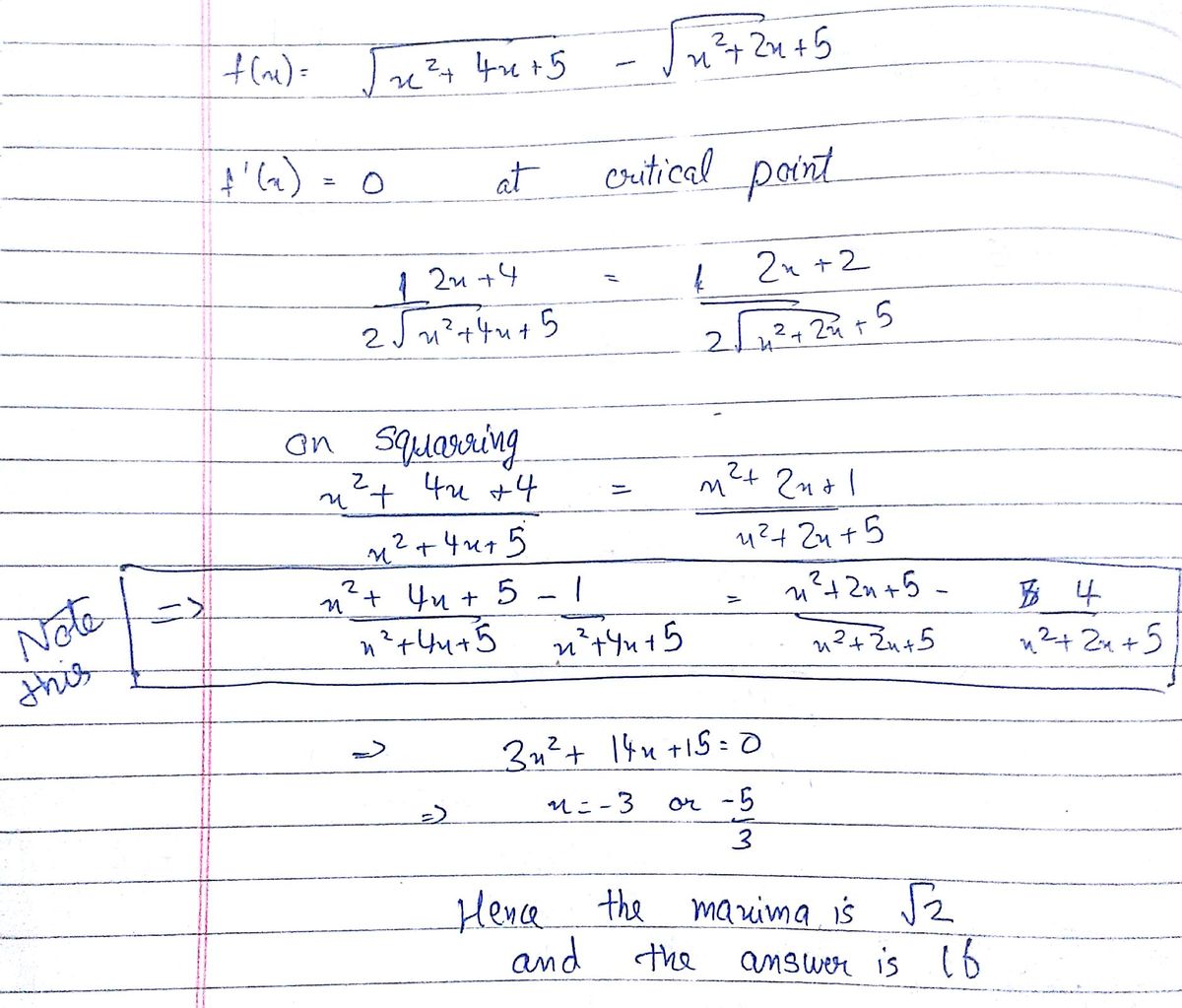Approach Matters, Answer Doesn't
S = ∣ ∣ ∣ x 2 + 4 x + 5 − x 2 + 2 x + 5 ∣ ∣ ∣ ∀ x ∈ R
For S as given above, find the maximum value of S 8 .
Notation: ∣ ⋅ ∣ denotes the absolute value function .
The answer is 16.
This section requires Javascript.
You are seeing this because something didn't load right. We suggest you, (a) try
refreshing the page, (b) enabling javascript if it is disabled on your browser and,
finally, (c)
loading the
non-javascript version of this page
. We're sorry about the hassle.
3 solutions
The title compelled me to think this way...Nice problem
Difference of any two sides of a triangle is never equal to third side, it is always less than the third side. Since co - ordinates of P ( x , 0 ) is variable, so there is a possibility that given points become collinear for some value of x , in which case equality occurs. This value of x comes out to be 3 .
Nice use and nice set i did the same.
I wasn't able to find the points... See my solution
you have written it wrong it would be x-(-2) not x+(-2)
Intersting problem. Solved in similar manner.
I thought the exact thing which Deepanshu Gupta wrote, but wasn't able to find the vertices of the triangle.
Then I thought of differentiating ( although I knew it was of least help :P), and found something interesting..
 .
.
Brute force method!! :D.. I solved Like Deepanshu Bhaiya

S = ∣ ∣ ∣ ∣ ( x + ( − 2 ) ) 2 + ( 0 − 1 ) 2 − ( x + ( − 1 ) ) 2 + ( 0 − 2 ) 2 ∣ ∣ ∣ ∣ .
Let A ( − 2 , 1 ) , B ( − 1 , 2 ) and P ( x , 0 ) in the x - y plane ⟹ S = ∣ P A − P B ∣ .
Now by triangle inequality difference of any side must be lesser or equal to third side.
⟹ ∣ P A − P B ∣ ≤ ∣ A B ∣ ⟹ S m a x = A B = 2 ⟹ ( S m a x ) 8 = 1 6